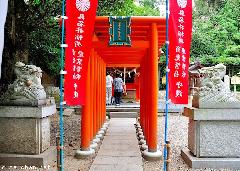Christmas celebrations started in Japan after the arrival of Saint Francis Xavier, in 1549. And this was also the beginning of all the Christmas-related celebrations, including Santa Claus (サンタさん Santa-san, or サンタクロース Santa Kurōsu in Japanese).
But the success of the Christmas celebrations in Japan was probably facilitated by the existence of a much older tradition, related to a Buddhist God sharing similar traits: Hotei, also known as Budai (or Putai), is one of the Seven Gods of Luck (Shichifukujin), the God of abundance, satisfaction and happiness and also a patron of children, fortunetellers and… bartenders.
Usually represented as a Buddhist monk with a shaved head, always with a cheerful face and a big belly (which symbolizes the largeness of his soul), Hotei is sometimes represented very similar to Santa Claus, with a large bag of gifts and good luck for those who believe in him. What’s more, there are also other representations, like the statue from my photo, where Hotei is surrounded by happy children.
And there’s another similarity with Santa Claus: Hotei brings gifts about the same time of year, on the New Year, when he arrives together with the Seven Gods of Luck…
メリークリスマス!
EXIF Info:
|
Yesterday’s Japan Photo:Rare guardian statues, Dragons |



